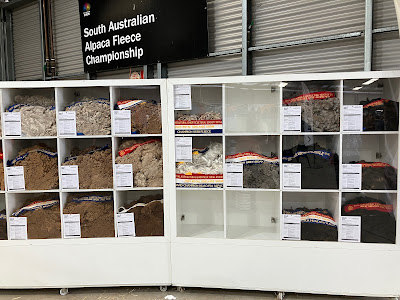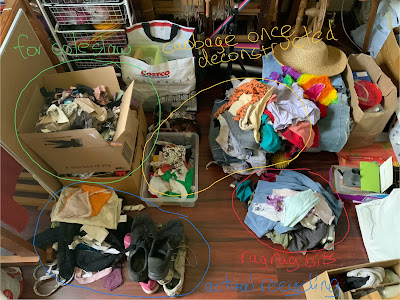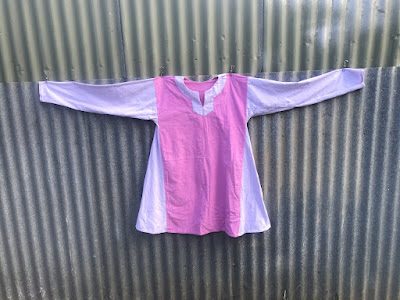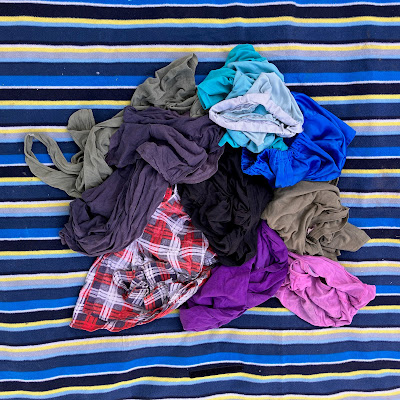The Royal Show is on this week. Being in need of free entry civic minded, I volunteered to help man the spinner's and weaver's guild stall.
This gives me half a day to wander the showgrounds, and half a day where I stand at the booth, spindle spinning for the public, and blowing people's minds with random facts like "This is how people spun thread for most of human history, the treadle spinning wheel was only invented in the 1500s" and "It took longer to spin and weave the sails for a Viking longship than it did to build the ship itself". Kids in particular love to see how thread is made.
My first shift this time was a morning one (I only slightly regret that choice, being that I Am Not A Morning Person). So of course the first thing I did when I knocked off was go and talk to the alpaca breeders. (They were easier to find than the sheep.)
I must have arrived at a good time, because I had a great chat with the rep manning the Alpaca Association stall in the building. I have a keen interest in the local fibre industries, for obvious reasons. So I always take the time to talk to anyone involved with it, in any capacity.
 |
| This is about half of the comptetion fleeces that were on display. |




